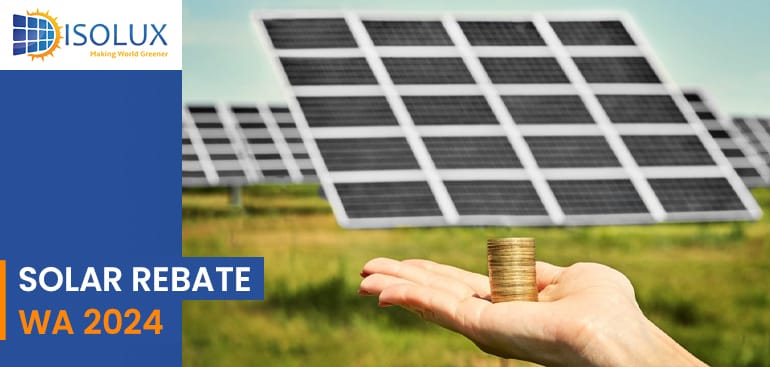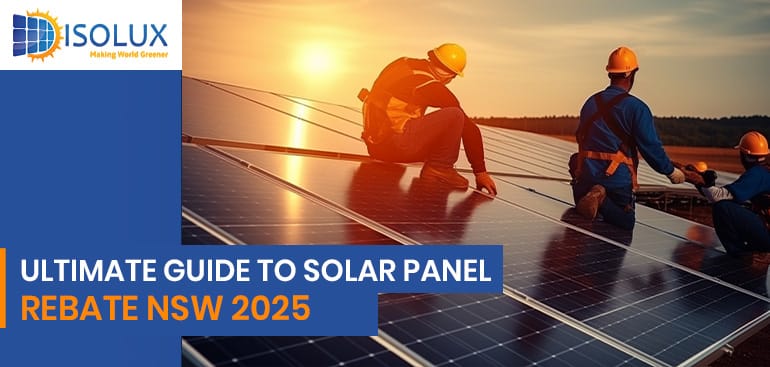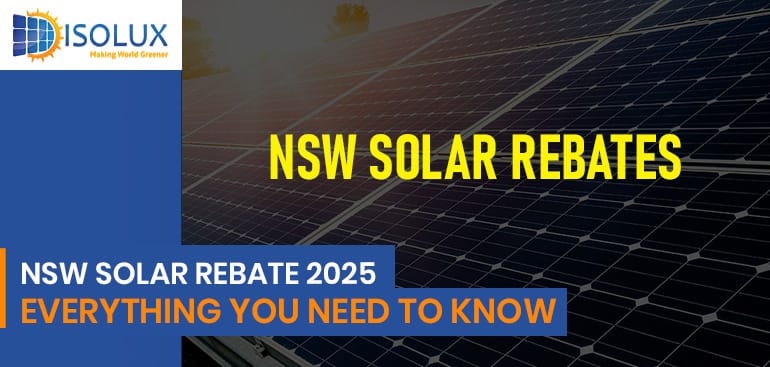With abundant sunlight, Western Australia (WA) is a prime location for solar power adoption. The Solar Rebate WA program, part of Australia’s national Small-scale Renewable Energy Scheme (SRES), helps residents cut costs on solar installations, making solar energy more accessible and affordable.
How to Claim Solar Rebate WA
To claim the solar rebate, start by selecting a Clean Energy Council (CEC)-approved solar installer. When installing a solar system, your installer will handle the registration and application for Small-scale Technology Certificates (STCs), reducing the upfront installation cost. This rebate is often applied directly as a discount, saving you both time and money.
How Much Solar Rebates I Get In Western Australia
In Western Australia, the government rebate for solar panel systems depends on the system size and the number of Small-scale Technology Certificates (STCs) eligible for claim. Below is an estimated breakdown of the subsidy based on typical solar system sizes:
1. 3.9 kW: Up to $1,500
2. 6.6 kW: Up to $2,500
3. 10.5 kW: Up to $4,000
4. 13.2 kW: Up to $5,000
5. 19.8 kW: Up to $7,200
6. 39.9 kW: Up to $15,000
The rebate amount depends on factors like the system’s energy production, efficiency, and the current STC market. To maximize your savings, consider working with a Clean Energy Council-approved installer. Additionally, rebates will phase out over time, so it’s best to install sooner rather than later to take full advantage of these incentives.
How Does the Rebate Work?
The Solar Rebate WA is based on STCs, calculated by your solar system’s capacity and expected energy production. Each STC represents a dollar amount, which varies depending on market demand and location. In WA, the number of STCs you receive is influenced by your location and the system’s size, offering a significant reduction in installation costs.
Solar Rebate WA End Date
The current solar rebate program through STCs is set to gradually phase out by 2030. Each year, the number of STCs decreases, meaning the rebate amount will also reduce over time. Homeowners in WA are encouraged to install solar systems sooner to maximize savings before the rebate phases out.
Who is Eligible for the Solar Rebate WA?
Any WA resident installing a small-scale renewable energy system (up to 100 kW) qualifies for the rebate. To ensure eligibility, use a CEC-accredited solar installer and an approved solar panel system. Homeowners, businesses, and some rental properties can all benefit from this rebate, with eligibility criteria focused on the system size and installation standards.
What Other Solar Incentives and Subsidies Are Available in WA?
In Western Australia (WA), alongside the Solar Rebate WA, two key incentives help residents save on energy costs:
1. Household Electricity Credit: This is a WA Government initiative that provides direct electricity bill credits to eligible households, offsetting some energy expenses. These credits vary in amount and are automatically applied to accounts that qualify.
2. Distributed Energy Buyback Scheme (DEBS): This scheme compensates households for the excess solar energy they export to the grid. Unlike traditional feed-in tariffs, DEBS rates are variable, rewarding energy exports during peak times to support grid demand effectively.
Can I Get Free Solar Panels in WA?
While “free solar panels” are often advertised, these usually involve no-upfront-cost financing or leasing options. Some companies provide solar panels with repayment plans or power purchase agreements (PPAs), where the homeowner pays over time instead of upfront. While this isn’t technically free, it reduces the initial cost barrier, allowing more residents to benefit from solar energy without a large upfront expense.
Electric Vehicle Rebates in WA
In Western Australia (WA), the Electric Vehicle (EV) Rebate program offers eligible buyers up to $3,500 for purchasing new EVs or hydrogen fuel-cell vehicles with a retail price under $70,000 (including GST). The rebate encourages the shift toward cleaner transportation options and aims to reduce emissions. Additionally, WA’s Zero Emission Vehicle (ZEV) strategy includes funding for EV charging infrastructure expansion across the state to support this transition.
Also read: How Can Solar Panels Be Used to Charge Electric Vehicles?
Conclusion
Western Australia’s solar rebates and incentives make solar power more accessible and affordable. For residents in Perth and beyond, this is an ideal time to go solar, capitalize on the available incentives, and reduce electricity bills while supporting a greener future.
Get a Free Quote from Isolux Solar.




